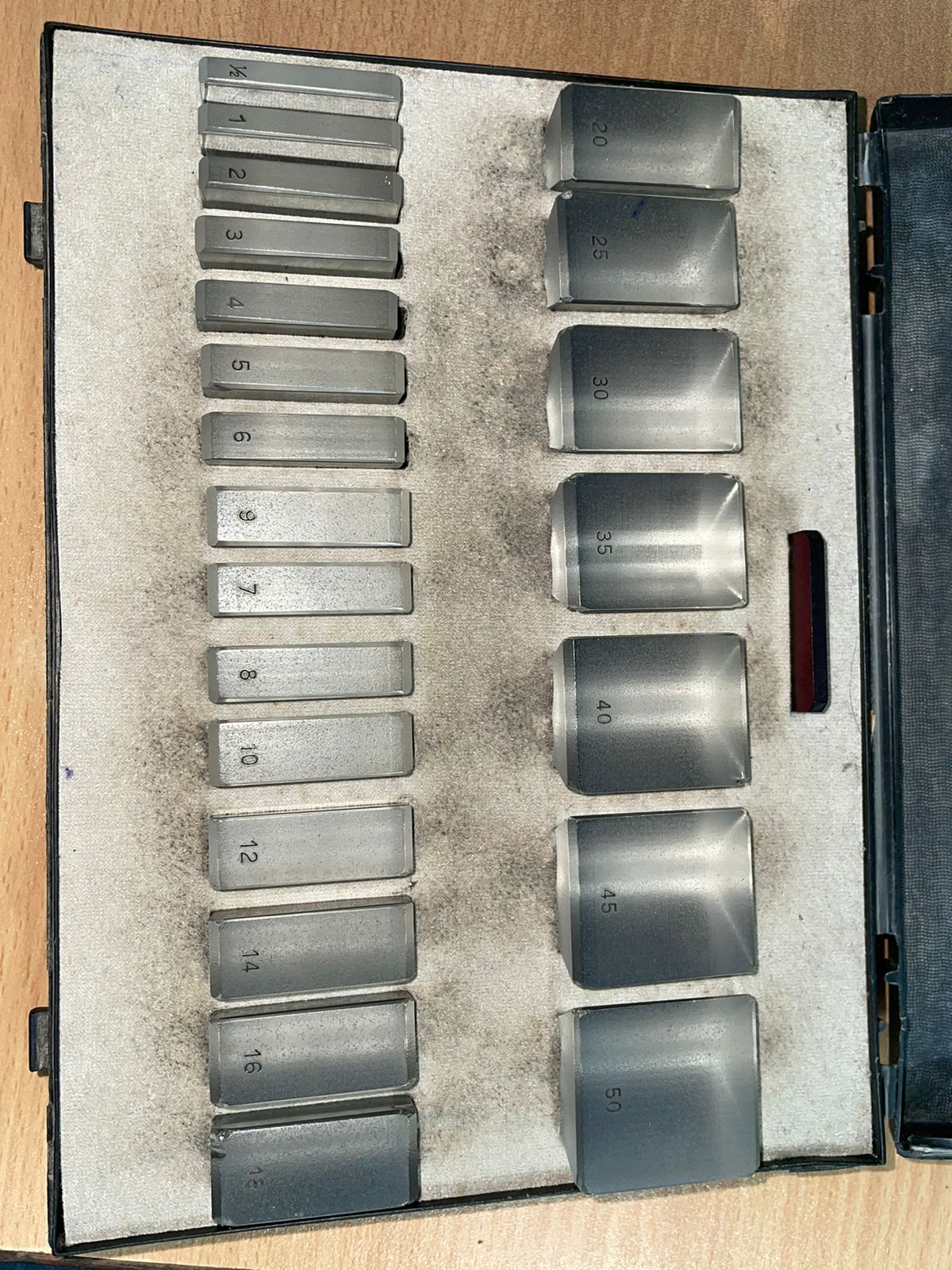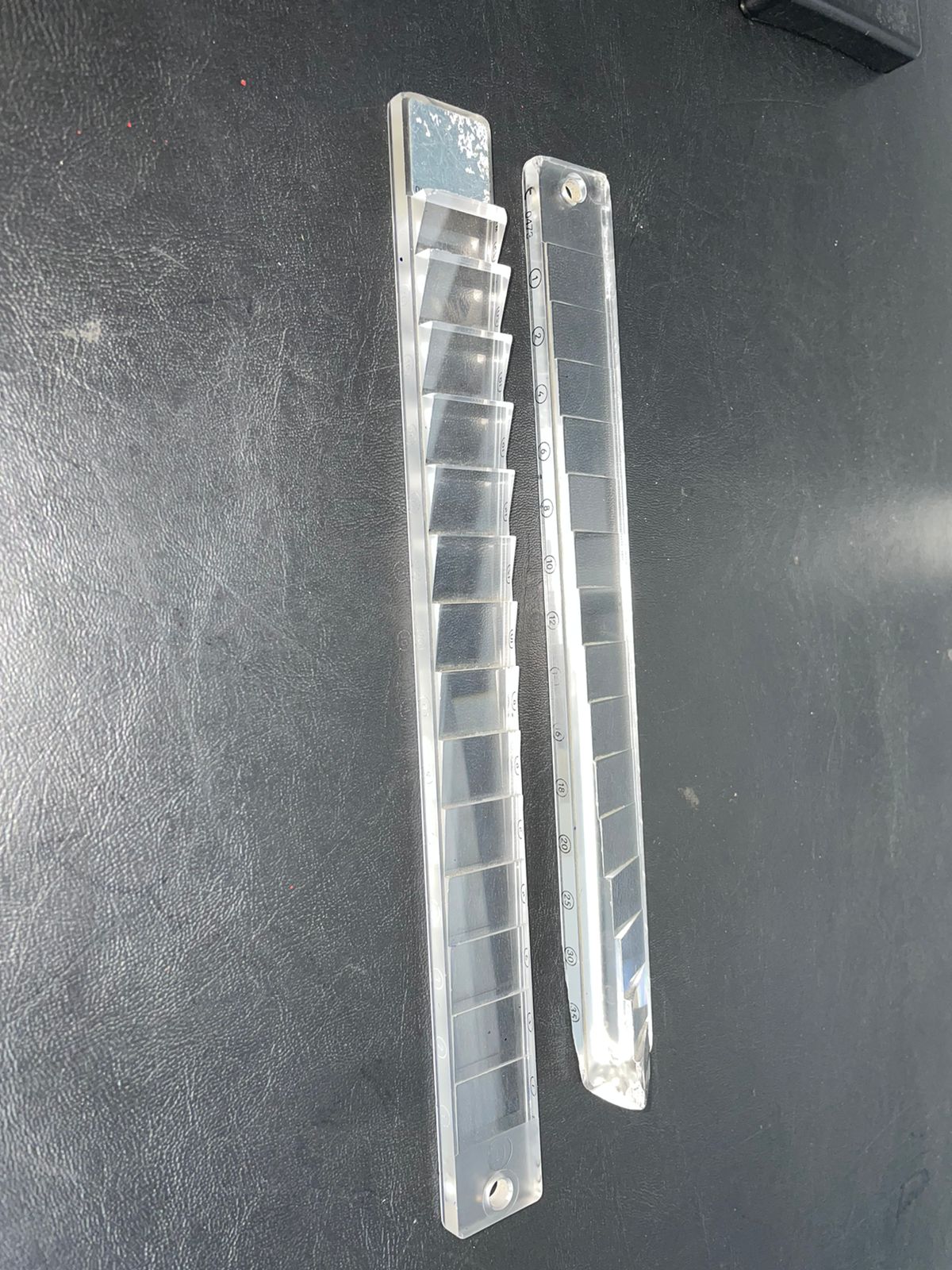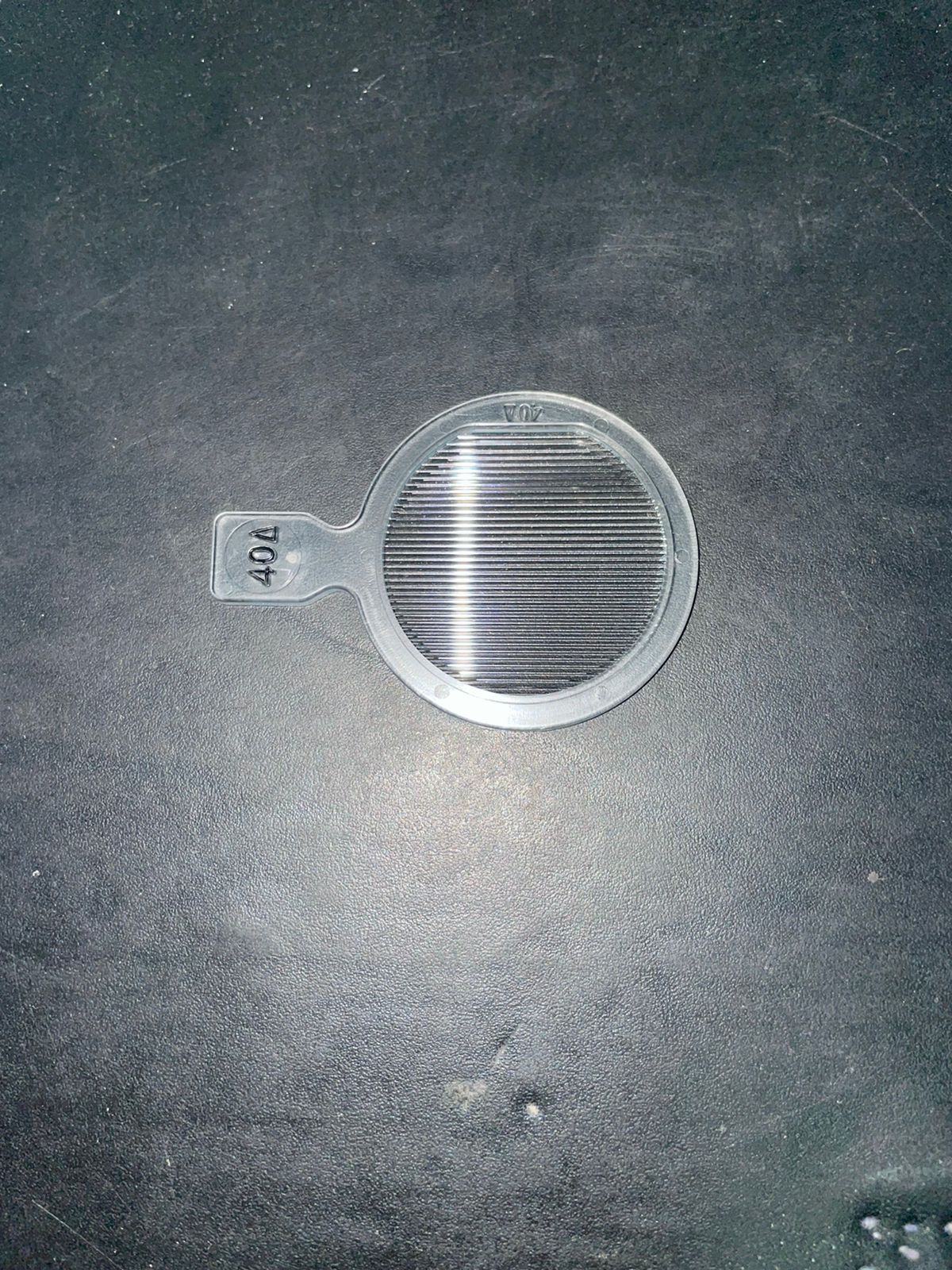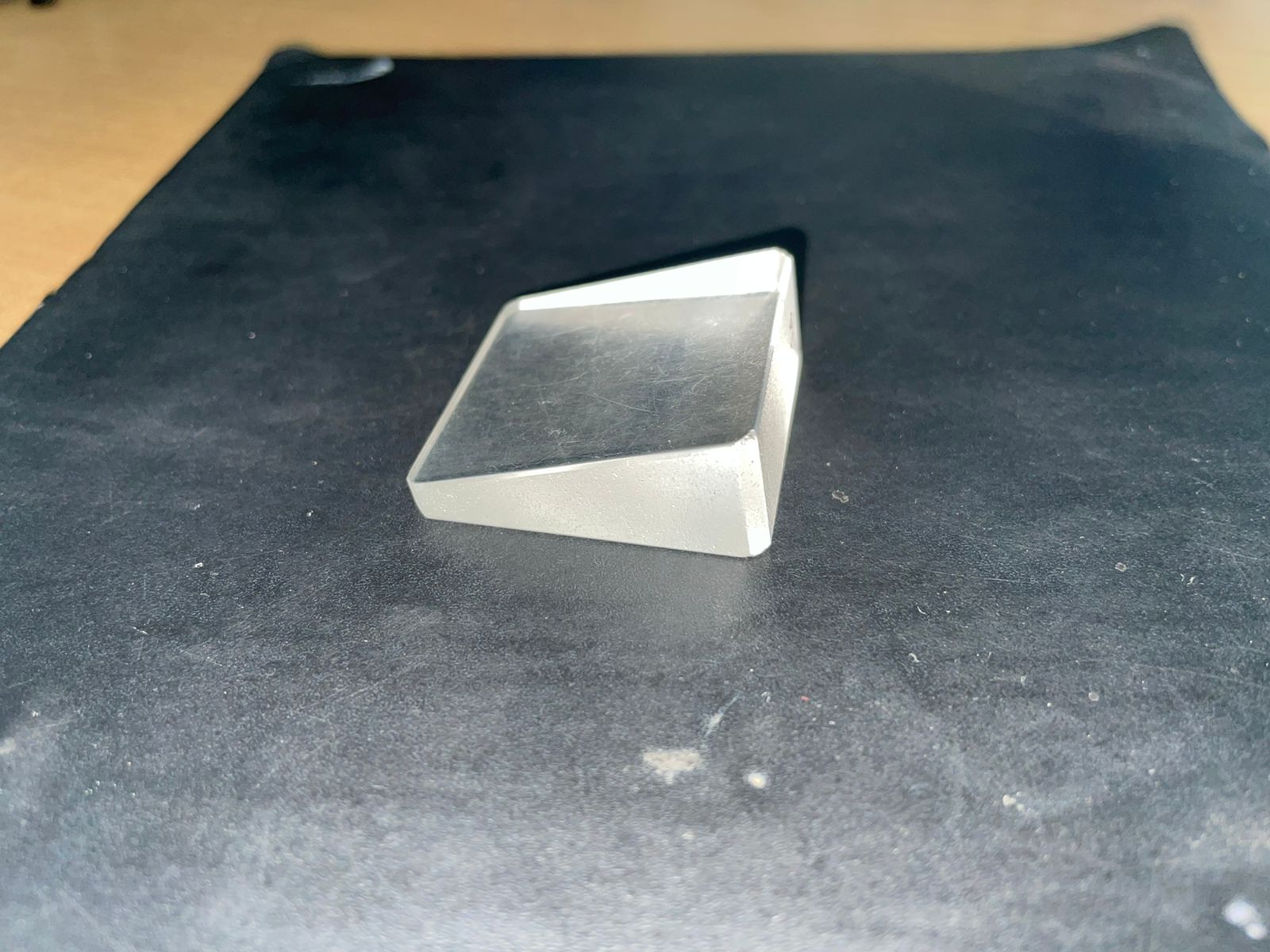[1]
Peli E, Vargas-Martin F, Kurukuti NM, Jung JH. Multi-periscopic prism device for field expansion. Biomedical optics express. 2020 Sep 1:11(9):4872-4889. doi: 10.1364/BOE.399028. Epub 2020 Aug 5
[PubMed PMID: 33014587]
[2]
Gray LS. The prescribing of prisms in clinical practice. Graefe's archive for clinical and experimental ophthalmology = Albrecht von Graefes Archiv fur klinische und experimentelle Ophthalmologie. 2008 May:246(5):627-9. doi: 10.1007/s00417-008-0799-2. Epub 2008 Apr 1
[PubMed PMID: 18379815]
[3]
Irsch K. Optical Issues in Measuring Strabismus. Middle East African journal of ophthalmology. 2015 Jul-Sep:22(3):265-70. doi: 10.4103/0974-9233.159691. Epub
[PubMed PMID: 26180462]
[4]
Thompson JT, Guyton DL. Ophthalmic prisms. Deviant behavior at near. Ophthalmology. 1985 May:92(5):684-90
[PubMed PMID: 4011143]
[5]
Barry JC, Backes A. [Measuring the effect of eyeglasses on determination of squint angle with Purkinje reflexes and the prism cover test]. Klinische Monatsblatter fur Augenheilkunde. 1998 Apr:212(4):234-9
[PubMed PMID: 9644670]
[6]
Schechter RJ. Snell's Law: optimum pathway analysis. Survey of ophthalmology. 1977 May-Jun:21(6):464-6
[PubMed PMID: 898012]
Level 3 (low-level) evidence
[7]
Thomas R, Braganza A, George T. Practical approach to diagnosis of strabismus. Indian journal of ophthalmology. 1996 Jun:44(2):103-12
[PubMed PMID: 8916600]
[9]
Hagen N, Tkaczyk TS. Compound prism design principles, III: linear-in-wavenumber and optical coherence tomography prisms. Applied optics. 2011 Sep 1:50(25):5023-5030
[PubMed PMID: 22423147]
[10]
Tang CY. Spherical lens decentration errors by Prentice's rule. Ophthalmic & physiological optics : the journal of the British College of Ophthalmic Opticians (Optometrists). 1989 Jan:9(1):86-90
[PubMed PMID: 2594387]
[12]
Fairlamb MS, Whitaker AM, Bain FE, Spies M, Freudenthal BD. Construction of a Three-Color Prism-Based TIRF Microscope to Study the Interactions and Dynamics of Macromolecules. Biology. 2021 Jun 23:10(7):. doi: 10.3390/biology10070571. Epub 2021 Jun 23
[PubMed PMID: 34201434]
[13]
Joo KS, Koo H, Moon NJ. Measurement of strabismic angle using the distance Krimsky test. Korean journal of ophthalmology : KJO. 2013 Aug:27(4):276-81. doi: 10.3341/kjo.2013.27.4.276. Epub 2013 Jul 18
[PubMed PMID: 23908574]
[14]
Dolman P. The Maddox Rod Screen Test. Transactions of the American Ophthalmological Society. 1919:17():235-49
[PubMed PMID: 16692471]
[15]
Hatt SR, Leske DA, Mohney BG, Brodsky MC, Holmes JM. Fusional convergence in childhood intermittent exotropia. American journal of ophthalmology. 2011 Aug:152(2):314-9. doi: 10.1016/j.ajo.2011.01.042. Epub 2011 May 31
[PubMed PMID: 21621744]
[16]
Felius J, Locke KG, Hussein MA, Stager DR Jr, Stager DR Sr. Photographic assessment of changes in torsional strabismus. Journal of AAPOS : the official publication of the American Association for Pediatric Ophthalmology and Strabismus. 2009 Dec:13(6):593-5. doi: 10.1016/j.jaapos.2009.09.008. Epub
[PubMed PMID: 20006824]
[17]
Frantz KA, Cotter SA, Wick B. Re-evaluation of the four prism diopter base-out test. Optometry and vision science : official publication of the American Academy of Optometry. 1992 Oct:69(10):777-86
[PubMed PMID: 1436999]
[18]
Porter A. A simple method of detecting abnormal retinal correspondence. The British journal of ophthalmology. 1979 May:63(5):353-4
[PubMed PMID: 465411]
Level 3 (low-level) evidence
[19]
Wang JY, Leske DA, Hatt SR, Holmes JM. Diplopia after strabismus surgery for adults with nondiplopic childhood-onset strabismus. Journal of AAPOS : the official publication of the American Association for Pediatric Ophthalmology and Strabismus. 2019 Dec:23(6):313.e1-313.e5. doi: 10.1016/j.jaapos.2019.07.005. Epub 2019 Oct 3
[PubMed PMID: 31586582]
[20]
Akbari MR, Mehrabi Bahar MR, Mirmohammadsadeghi A, Bayat R, Masoumi A. Short prism adaptation test in patients with acquired nonaccommodative esotropia; clinical findings and surgical outcome. Journal of AAPOS : the official publication of the American Association for Pediatric Ophthalmology and Strabismus. 2018 Oct:22(5):352-355. doi: 10.1016/j.jaapos.2018.05.018. Epub 2018 Sep 15
[PubMed PMID: 30227245]
[22]
Hashemi H, Nabovati P, Khabazkhoob M, Yekta A, Ostadimoghaddam H, Doostdar A, Ramin S, Aghamirsalim M. The Prevalence of Fusional Vergence Dysfunction in a Population in Iran. Journal of current ophthalmology. 2021 Apr-Jun:33(2):112-117. doi: 10.4103/JOCO.JOCO_61_20. Epub 2021 Jul 5
[PubMed PMID: 34409219]
[23]
Pineles SL. Divergence Insufficiency Esotropia: Surgical Treatment. The American orthoptic journal. 2015:65():35-9. doi: 10.3368/aoj.65.1.35. Epub
[PubMed PMID: 26564924]
[24]
Iliescu DA, Timaru CM, Alexe N, Gosav E, De Simone A, Batras M, Stefan C. Management of diplopia. Romanian journal of ophthalmology. 2017 Jul-Sep:61(3):166-170
[PubMed PMID: 29450393]
[26]
Goodwin D. Homonymous hemianopia: challenges and solutions. Clinical ophthalmology (Auckland, N.Z.). 2014:8():1919-27. doi: 10.2147/OPTH.S59452. Epub 2014 Sep 22
[PubMed PMID: 25284978]
[27]
Peli E. 2017 Charles F. Prentice Award Lecture: Peripheral Prisms for Visual Field Expansion: A Translational Journey. Optometry and vision science : official publication of the American Academy of Optometry. 2020 Oct:97(10):833-846. doi: 10.1097/OPX.0000000000001590. Epub
[PubMed PMID: 33055514]
[28]
Krause HK. [Pitfalls in the prescription of reading glasses]. Der Ophthalmologe : Zeitschrift der Deutschen Ophthalmologischen Gesellschaft. 2011 Apr:108(4):324-30. doi: 10.1007/s00347-011-2343-8. Epub
[PubMed PMID: 21505967]
[29]
Haller T, Furr BA. Fresnel prism use among orthoptists. The American orthoptic journal. 2014:64():71-5. doi: 10.3368/aoj.64.1.71. Epub
[PubMed PMID: 25313114]
[30]
Gietzelt C, Fricke J, Neugebauer A, Hedergott A. Prism adaptation test before strabismus surgery in patients with decompensated esophoria and decompensated microesotropia. International ophthalmology. 2022 Jul:42(7):2195-2204. doi: 10.1007/s10792-022-02219-3. Epub 2022 Jan 17
[PubMed PMID: 35038124]
[31]
Alvarez TL, Kim EH, Granger-Donetti B. Adaptation to Progressive Additive Lenses: Potential Factors to Consider. Scientific reports. 2017 May 31:7(1):2529. doi: 10.1038/s41598-017-02851-5. Epub 2017 May 31
[PubMed PMID: 28566706]
[32]
Tamhankar MA, Ying GS, Volpe NJ. Success of prisms in the management of diplopia due to fourth nerve palsy. Journal of neuro-ophthalmology : the official journal of the North American Neuro-Ophthalmology Society. 2011 Sep:31(3):206-9. doi: 10.1097/WNO.0b013e318211daa9. Epub
[PubMed PMID: 21378578]
[33]
De Pool ME, Campbell JP, Broome SO, Guyton DL. The dragged-fovea diplopia syndrome: clinical characteristics, diagnosis, and treatment. Ophthalmology. 2005 Aug:112(8):1455-62
[PubMed PMID: 15953644]
[34]
Esfahlani H, Karkar S, Lissek H, Mosig JR. Acoustic dispersive prism. Scientific reports. 2016 Jan 7:6():18911. doi: 10.1038/srep18911. Epub 2016 Jan 7
[PubMed PMID: 26739504]
[35]
Wang ZP, Sun WM, Ruan SL, Kang C, Huang ZJ, Zhang SQ. Polarization-preserving totally reflecting prisms with a single medium layer. Applied optics. 1997 May 1:36(13):2802-6
[PubMed PMID: 18253275]
[36]
Schonbrun E, Abashin M, Blair J, Wu Q, Park W, Fainman Y, Summers CJ. Total internal reflection photonic crystal prism. Optics express. 2007 Jun 25:15(13):8065-75
[PubMed PMID: 19547134]
[37]
Simon MC, Echarri RM. Internal total reflection in monoaxial crystals. Applied optics. 1987 Sep 15:26(18):3878-83. doi: 10.1364/AO.26.003878. Epub
[PubMed PMID: 20490157]
[38]
Montarou CC, Gaylord TK. Analysis and design of modified Wollaston prisms. Applied optics. 1999 Nov 1:38(31):6604-16
[PubMed PMID: 18324196]
[39]
Liu YD, Gao C, Qi X. Field rotation and polarization properties of the Porro prism. Journal of the Optical Society of America. A, Optics, image science, and vision. 2009 May:26(5):1157-60
[PubMed PMID: 19412232]
Level 2 (mid-level) evidence
[40]
Wessels IF, Thomas S, Wessels DA. Hook and loop fastener on loose prisms assists in measuring ocular deviation. Ophthalmic surgery and lasers. 1998 Sep:29(9):774-7
[PubMed PMID: 9760618]
[41]
Kaye SB, Ansons AM, Green JR, Wylie J. The prism bar--Prentice and frontal positions. Eye (London, England). 1989:3 ( Pt 4)():404-8
[PubMed PMID: 2606213]
[42]
Véronneau-Troutman S. Fresnel prisms and their effects on visual acuity and binocularity. Transactions of the American Ophthalmological Society. 1978:76():610-53
[PubMed PMID: 754384]
[43]
Waddell JH. Rotating prism design for continuous image compensation cameras. Applied optics. 1966 Jul 1:5(7):1211-23. doi: 10.1364/AO.5.001211. Epub
[PubMed PMID: 20049049]
[44]
Zhao Y, Yuan Y. First-order approximation error analysis of Risley-prism-based beam directing system. Applied optics. 2014 Dec 1:53(34):8020-31. doi: 10.1364/AO.53.008020. Epub
[PubMed PMID: 25607958]
[45]
Santos EM, Yaramothu C, Alvarez TL. Comparison of symmetrical prism adaptation to asymmetrical prism adaptation in those with normal binocular vision. Vision research. 2018 Aug:149():59-65. doi: 10.1016/j.visres.2018.06.004. Epub 2018 Jun 28
[PubMed PMID: 29940191]
[46]
Jung JH, Peli E. Impact of high power and angle of incidence on prism corrections for visual field loss. Optical engineering (Redondo Beach, Calif.). 2014 Jan 17:53(6):. doi: 10.1117/1.OE.53.6.061707. Epub
[PubMed PMID: 24497649]
[47]
Schroth V, Joos R, Jaschinski W. Effects of Prism Eyeglasses on Objective and Subjective Fixation Disparity. PloS one. 2015:10(10):e0138871. doi: 10.1371/journal.pone.0138871. Epub 2015 Oct 2
[PubMed PMID: 26431525]
[50]
Schroth V, Joos R, Alshuth E, Jaschinski W. Effects of aligning prisms on the objective and subjective fixation disparity in far distance. Journal of eye movement research. 2019 Dec 11:12(4):. doi: 10.16910/jemr.12.4.8. Epub 2019 Dec 11
[PubMed PMID: 33828739]
[51]
Giorgi RG, Woods RL, Peli E. Clinical and laboratory evaluation of peripheral prism glasses for hemianopia. Optometry and vision science : official publication of the American Academy of Optometry. 2009 May:86(5):492-502. doi: 10.1097/OPX.0b013e31819f9e4d. Epub
[PubMed PMID: 19357552]
[52]
Lee SH, Jun W, London R. Optical Management Using Monovision and Yoked Prism for Acquired Strabismus and Nystagmus Secondary to a Neurodegenerative Disease. Neuro-ophthalmology (Aeolus Press). 2015 Jun:39(3):147-151
[PubMed PMID: 27928348]
[53]
Peli E, Bowers AR, Keeney K, Jung JH. High-Power Prismatic Devices for Oblique Peripheral Prisms. Optometry and vision science : official publication of the American Academy of Optometry. 2016 May:93(5):521-33. doi: 10.1097/OPX.0000000000000820. Epub
[PubMed PMID: 26866438]
[54]
Saxena R, Singh D, Jethani J, Sharma P, Sinha R, Sharma N, Sachdev Writing Committee MS, Prepared in Association with the AIOS Pediatric and. Pediatric ophthalmology, strabismus and neuro-ophthalmology practice in the COVID-19 era: All India Ophthalmological Society guidelines. Indian journal of ophthalmology. 2020 Jul:68(7):1300-1305. doi: 10.4103/ijo.IJO_1789_20. Epub
[PubMed PMID: 32587154]
[55]
Choe HR, Yang HK, Hwang JM. Long-term outcomes of prismatic correction in partially accommodative esotropia. PloS one. 2019:14(12):e0225654. doi: 10.1371/journal.pone.0225654. Epub 2019 Dec 2
[PubMed PMID: 31790473]
[56]
Hull S, Tailor V, Balduzzi S, Rahi J, Schmucker C, Virgili G, Dahlmann-Noor A. Tests for detecting strabismus in children aged 1 to 6 years in the community. The Cochrane database of systematic reviews. 2017 Nov 6:11(11):CD011221. doi: 10.1002/14651858.CD011221.pub2. Epub 2017 Nov 6
[PubMed PMID: 29105728]
Level 1 (high-level) evidence
[57]
Baranowska-George T. [The effect of treatment with prisms on head position in persons with nystagmus--preliminary report]. Klinika oczna. 1996 Mar:98(3):195-6
[PubMed PMID: 9019587]
[58]
Deacon MA, Gibson F. Strabismus measurements using the alternating and simultaneous prism cover tests: a comparative study. Journal of pediatric ophthalmology and strabismus. 2001 Sep-Oct:38(5):267-72
[PubMed PMID: 11587174]
Level 2 (mid-level) evidence
[59]
Fray KJ. Fusional amplitudes: exploring where fusion falters. The American orthoptic journal. 2013:63():41-54. doi: 10.3368/aoj.63.1.41. Epub
[PubMed PMID: 24141750]
[60]
Golnik KC, Lee AG, Eggenberger ER. The monocular vertical prism dissociation test. American journal of ophthalmology. 2004 Jan:137(1):135-7
[PubMed PMID: 14700656]
[61]
Murray C MRes, BSc HONS, Newsham D PhD, MSc, DBO. The Normal Accommodative Convergence/Accommodation (AC/A) Ratio. Journal of binocular vision and ocular motility. 2018 Oct-Dec:68(4):140-147. doi: 10.1080/2576117X.2018.1529450. Epub 2018 Oct 25
[PubMed PMID: 30358493]
[62]
Agarwal R, Tripathi A. Current Modalities for Low Vision Rehabilitation. Cureus. 2021 Jul:13(7):e16561. doi: 10.7759/cureus.16561. Epub 2021 Jul 22
[PubMed PMID: 34466307]
[63]
Apfelbaum H, Peli E. Tunnel Vision Prismatic Field Expansion: Challenges and Requirements. Translational vision science & technology. 2015 Dec:4(6):8
[PubMed PMID: 26740910]
[64]
Al-Karmi R, Markowitz SN. Image relocation with prisms in patients with age-related macular degeneration. Canadian journal of ophthalmology. Journal canadien d'ophtalmologie. 2006 Jun:41(3):313-8
[PubMed PMID: 16767185]
[65]
Garcia-Montoya L, Gul H, Emery P. Recent advances in ankylosing spondylitis: understanding the disease and management. F1000Research. 2018:7():. pii: F1000 Faculty Rev-1512. doi: 10.12688/f1000research.14956.1. Epub 2018 Sep 21
[PubMed PMID: 30345001]
Level 3 (low-level) evidence
[66]
Scheiman M, Cotter S, Rouse M, Mitchell GL, Kulp M, Cooper J, Borsting E, Convergence Insufficiency Treatment Trial Study Group. Randomised clinical trial of the effectiveness of base-in prism reading glasses versus placebo reading glasses for symptomatic convergence insufficiency in children. The British journal of ophthalmology. 2005 Oct:89(10):1318-23
[PubMed PMID: 16170124]
Level 1 (high-level) evidence



